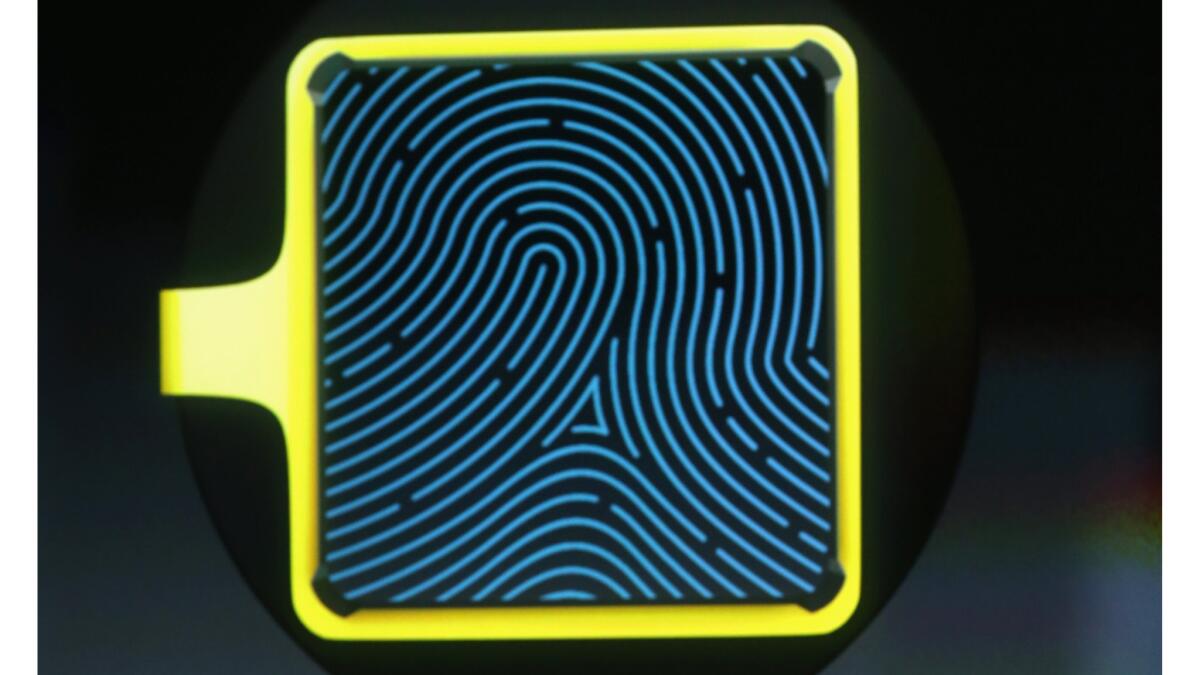The next iPhone may have no fingerprint reader, and other rumors

- Share via
As the expected fall debut of Apple Inc.’s next iPhones nears, rumors have taken hold, based on reports from analysts and leaks from Apple’s supply chain.
As with all speculative reports, it’s best to take these ideas with a grain (or shaker) of salt. Apple did not immediately respond to a request for comment.
Here’s a breakdown of what people are saying and what we make of it.
More OLED
There has long been an expectation that the next high-end version of the iPhone would have a new type of screen called OLED, which is short for “organic light-emitting diode.” OLED screens boast more vivid colors, deeper blacks and improved battery life. But they are also more difficult to produce, particularly in the quantities that Apple requires for the iPhone.
New reports indicate that Apple will eventually move completely to OLED screens, starting with the 10th-anniversary iPhone. The company would then release three OLED models in the second half of 2018. These reports are based largely on an article from the Nikkei Asian Business Review, which cites unnamed sources in Apple’s Asian supply chain.
This would make some sense. There have been reports for years that Apple wants to switch to an OLED screen. Such screens are the standard on iPhone competitors, particularly those from Samsung — a top OLED screen manufacturer and itself an Apple supplier. The Nikkei report said that Apple has also invested in LG’s OLED manufacturing department, which indicates that Apple is interested in finding ways to make the screens at an iPhone scale.
Touch ID
Apple is expected to ditch the home button for the high-end iPhone in favor of an edge-to-edge screen. But that change would eliminate the location of the fingerprint reader. That has led some to wonder whether Apple will move the reader, embed it in the screen or get rid of it altogether.
Apple analyst Ming Chi Kuo of KGI Securities wrote in a recent note that Apple won’t put the fingerprint reader in the display — something many hoped the company would do to be more consistent with its current design. But the report didn’t indicate where the fingerprint reader may go.
Getting a bit more speculative, the popular YouTube channel EverythingApplePro drew attention when it posted a detailed metal-and-glass mock-up of the premium iPhone, which it said was sent by a Chinese case maker. That dummy phone did not have a spot on the front of the phone for a fingerprint reader, though it did show a case with a cutout in the back of the phone, over the Apple logo. That could mean that, like on competing smartphones, the fingerprint reader could go there. Or the case may just be designed to show off the Apple logo.
Still, it would be surprising to see Apple drop the fingerprint reader, particularly given how hard the company has pushed Touch ID and how integral it has become to the phone for logging in and purchasing.
Facial recognition
If Apple ditches the fingerprint reader what would replace it?
Facial recognition is a popular guess. Previous reports have indicated Apple is testing advanced facial recognition as an authentication method. A report from Bloomberg cited unnamed sources “familiar with the product” who said that facial recognition could be used to unlock phones, buy goods and open secure apps. And TechCrunch spotted a patent that indicates Apple is working on technology that would use a phone’s camera to scan your face — even when the phone is asleep — to unlock the device.
Facial recognition makes a lot of sense as a verification tool, particularly if Apple gets rid of Touch ID. It would offer another option for biometric authentication, which many find more convenient than passwords and pass codes.
The face scans rumored to be in development by Apple could be more consistent than fingerprint readers, which can act up when, for example, the user’s finger is wet.
Tsukayama writes for the Washington Post.
ALSO
Qualcomm wants some iPhone imports banned, escalating patent fight with Apple
Elon Musk said Tesla could build Australia a power storage system in 100 days. Now we’ll see
Cars are full of tech that gets outdated fast — so people are leasing, not buying
Snapchat shifts policy to allow hyperlinks in posts






